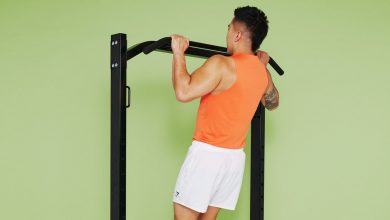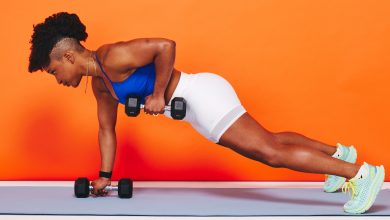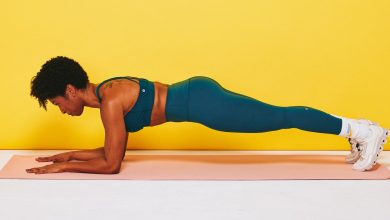Learning to Swim as an Adult Feels Like Coming Home

I was the kid “adult swim” was invented for (or, honestly, to protect against). By five, I was a capable little swimmer, and once I had my coveted passport to freedom—the green wristband awarded upon passing the deep end test—I refused to exit the pool, no matter how much I was coaxed or threatened, until exactly 10 minutes before the hour. At 50 minutes the lifeguards gave their whistles one long blast and cleared the pool of all children (no matter how hard we tried to hide silently under the diving board) so anyone who wanted to have a splash-free swimming experience could keep their hair, faces, or injuries dry while my friends and I, prone to cannonball contests and water fights, were banished. I would then dash to the playground to avoid capture (and subsequent towel mummification), impatient for the next long blast of the whistle when I could leap back into the pool for 50 more minutes of joy.
For a while, it was delicious: I swam and jumped and ran amok, even if I had to try really, really hard to ignore my longing to wear trunks like the boys. When I was growing up in the ’80s, they had Jams, swimsuits that looked like a video arcade carpet and my grandfather’s lucky bowling shirt had somehow made a baby, eye-burningly bright and knee length, with a drawstring at the waist to lace them tighter for better slim-hipped surfing. I begged my mother to buy me a pair, and I was eventually allowed to have one to wear as shorts—but not, of course, to swim in them. I was already showing worrying signs of gender non-compliance, and none of the people responsible for me were going to let me get any closer to boyishness if they could help it.
Of all the things I needed to buy and wear as a child and young adult, swimsuits were truly the worst. I managed my upset about them because in the pool, I was confident and competent in a way I just wasn’t on land, but the older I got, the more work it took. I took formal lessons and learned to swim further, faster; even when puberty made me cry at night, I signed up for lifeguarding class and got certified. I hurried out of the pool and into my shorts at the end of every session, like I could somehow erase my classmates’ memory of my body, my swimsuit, my growing discomfort under my boxy hypercolor summer wardrobe. I wore a towel wrapped around my waist in the guard chair and broiled in the sun, watching sunscreen-basted children toddle in their inflatable floaty rings and teenagers play chicken in the shallow end. Despite my discomfort, it was easy work with a good schedule that paid well enough to afford the clothes I snuck to wear: squared-off men’s jeans with real pockets and Timberland boots I left unlaced, clomping around out with my friends as my gender expression started to slowly catch up to my own sense of myself as a young man. The closest to mainstream trans-awareness we had in the early ’90s was laughing along with the studio audience as a trans woman on Jerry Springer (she used to be a man!) revealed her assigned sex at birth on national daytime television.
Eventually, it all became too much. My body was the furthest thing from a wonderland; I experienced it as a house of horrors. So thick and broad and unlike the other girls while simultaneously being enough like a woman’s that there was no hiding it; so much body hair; so much exhaustion and shame. When I tried to discuss this with other people who shared my assigned sex, I was assured that they, too, felt uncomfortable and unfamiliar in their bodies, like a stranger had descended to take over a physical form they had previously trusted. I privately suspected that we were having different experiences but I had no way to prove it, no way to articulate what I found so troubling or why.
Eventually, I stopped swimming. Not all at once, but between 18 and 21, I went from swimming across the lake every morning, hands entering the water at a precise and efficient angle and legs flutter-kicking my buoyantly fat body fast across the mist of the morning water, to declining every invitation that included water. I’d sit, sweaty and disconsolate, on the shore, while my more gender-conforming friends splashed like otters in the summer sun and then lay on the beach, glistening with Hawaiian Tropic SPF 2 and letting the Sun-In do its work on their hair. I divorced the water and all its pleasures, and if I occasionally dipped back in in the dark or while I was all alone and unsupervised, I did it with all the shame and trepidation you might expect from a person going back to hook up with an ex who did them wrong. I threw away the last of my swimwear and never replaced it, and somehow could not clear my schedule for any event that might have required one.
Here we will skip forward in time, sparing us nearly two decades of unpleasantness: Broiling in my own sweat inside a series of ever-smaller and more compressing sports bras made for athletes, which I no longer was; the psychic relief and physical discomfort of the tight binder made for men with gynecomastia that shaped my torso to a more masculine silhouette but left me hot and constantly damp; past a lot of difficult negotiations with lovers and tailors; past years of oversized clothes; fast forwarding to the fall I turned 39. That’s when I had what trans guys call top surgery, reshaping of my chest to look like a man’s chest, like my chest. The first time I buttoned a shirt and saw it lay flat over my newly revealed pectoral muscles, lightly dusted with the hair that testosterone injections had started to awaken, I cried.
That spring, at a national queer conference, I was invited to a pool party and realized for the first time that I could…actually go. It was wild to consider, and I felt profoundly uncertain, but I was encouraged by my friend Aaron, who’d had the same surgery a decade before and knew how I was feeling. I took myself over to a Marshall’s during the lunch break and bought a pair of baggy gym shorts I could swim in. When the time came, I shucked my T-shirt and jumped into the pool at the Denver Sheraton, cannonball style, the way I had as a child, surrounded by other people in such a variety of swimming costumes and bodily topography under them, so many tattoos and piercings, so much hair and lack of it; frolicking like a pod of dolphins with other queer and trans and nonbinary and genderqueer people also feeling free for a rare moment to swim without judgment. To say it was transformative would be an understatement.
Back at home, the pool and I flirted but still couldn’t really reconcile. I dipped in with my kids at parent-child swims from time to time, always acutely aware of the other parents staring at my scars, discussing me when they thought I wasn’t looking, wondering what had happened to me. The beach, always easier because it didn’t require a locker room, still felt like a trial of eyeballs. As I aged, my body settled into remarkably common fat-dad shape: A barrel with legs, a luxuriantly hairy belly lopping gently over the waistband of my swim trunks, children’s goggles making my pockets bulge and hiding what didn’t.
But also as I got older, the years of being careless with my body started to take their toll. Old injuries I hadn’t seen a doctor for (so I could avoid the unpleasant experience of being trans at the doctor’s office) caught up to me, and so did the family tendency toward joint problems, the arthritis, the low back pain, the busted knees. On the day I turned 48, I decided once and for all to try to take care of my body a little better and joined a gym where—on my first day, for my birthday—I tried too hard to keep my heart rate in the “orange zone” and immediately tore my meniscus on the treadmill.
Turns out, saying “listen to your body” to a middle-aged trans man who has been at war with his body for almost 40 years doesn’t really work; I had been steadfastly ignoring my body for decades because it was the only way I could get through life, and all those chickens had started coming home to roost. I was out of shape and in constant pain, limping as I walked our patient dog, sitting on the sidelines while my kids played, counting the minutes in agony when I had to stand on line at the post office or the bank, and sometimes spending the day in bed loopy and fogged out on painkillers when the barometric pressure changed too much.
My doctor suggested swimming.
My immediate, bodily reaction was “definitely no.” But in the weeks that followed, struggling through a damp and chilly fall on the prairies, stiff and sore and cold and losing day after day of work and parenting responsibilities to pain (and, eventually, depression) I started to wonder why not? My scars had faded a lot, and the previous summer I’d had them tattooed over with tiny tropical flowers; I looked more like I’d been injured a long, long time ago than like I’d had chest masculinization surgery. I had a swimsuit again, a baggy, navy blue, very dad situation that had held up during many birthday parties and leisure swims. Something in me shifted, away from my old pain, pointing at my new life. I was married, I had kids, I had a career—things I wanted to live for, reasons to not just lumber along in constant discomfort and hope it wouldn’t get too much worse. On a Monday, while my husband was at work and my children were in school and I very much hoped everyone else was doing the same, I pulled out a towel and my unfashionable trunks and went to the pool.
The first day, I swam the world’s slowest 250 meters of breaststroke, soaked in the hot tub until my knee stopped throbbing, and went home in my wet trunks, skipping the showers and the looks I feared. The next day, I did it again, somehow even slower, and rested in the hot water for even longer. Over the following month, I made myself keep going back, thrashing back and forth in the slow lane with the senior citizens, increasing my distance by 50 meters every week. I finished the world’s slowest 300 meters, and, by the end of the month, the world’s slowest 400 meters, with four extremely splashy lengths of front crawl in the mix. But I was doing it. I sent my friends grimacing post-workout pool selfies for accountability, and their support kept me going on days that I was absolutely Not Interested in going back in the water.
As I slowly added distance and got infinitesimally faster, I began to notice all the things you’d hope: My back pain started to ease, my knees crackled and popped less when I stood up from my chair, my bad shoulder didn’t ache in the mornings as much. My posture improved as my times improved. By the three-month mark, my shirts fit better in some places and less well in others as my shoulders broadened. My stroke returned, making me more efficient, freeing my brain to stop reminding me to kick when I turned my head to breathe and allowing me to think. I figured out the structure of the show I was writing and solved problems in my screenplay while my limbs churned on autopilot, carrying me back and forth but also further and further from the years of sitting beside pools and lakes, envious and overheating. I regularly was away from the pool when I traveled, and sometimes went a week or more without swimming because pools that will sell you a day pass remain hard to find and new locker rooms still kind of freak me out…. But when I got home and put my swimsuit on again, my body remembered that this was a thing we did now, and when I asked it to jump in again, we did.
It has been nine months of this now, being happy in the water again. I’ve even swum (still pretty slowly!) in several new pools without combusting from anxiety. (A terrible thing about men’s locker rooms is that no one looks at anyone else for fear of homophobic blowback; a nice thing about men’s locker rooms is that no one looks at anyone else so wrapping a towel around my waist to shimmy demurely out of my swimsuit and into my underwear doesn’t attract any notice.) I can stand up without grunting and bend over without fear that my back will decide to quit, and when I get into the water I feel like a penguin.
Have you seen them swim? On land, they look awkward to the point of comedy, inefficiently moving their tubby little bodies as much side to side as they do forward, never getting anywhere quickly. But in the water? They’re fast, buoyed by their bellies and propelled fast and graceful by their wings, perfectly suited to the purpose. They fly.
And so—again, finally—do I.
Related:



